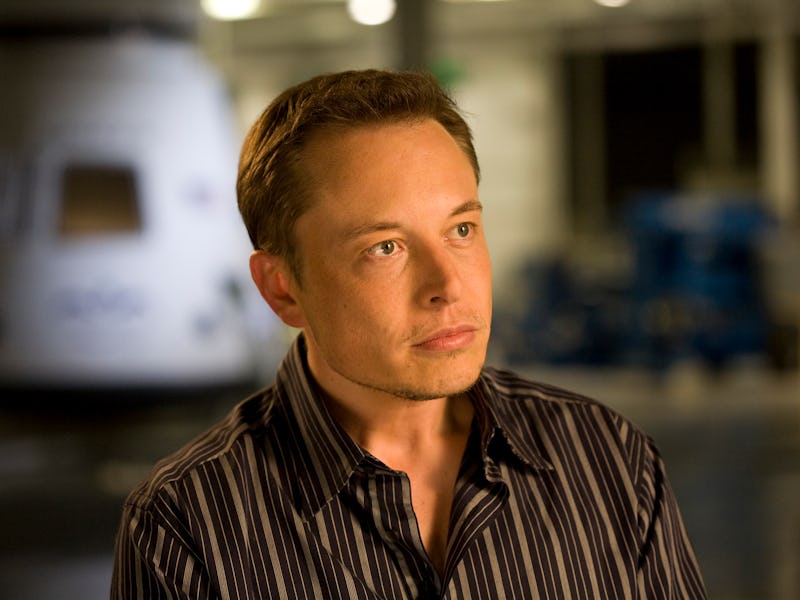Elon Musk Reveals Why Falcon Heavy Could Spark a New Space Era
It's all about thrust.

SpaceX’s Falcon Heavy rocket is due to launch at 1:30 p.m. Eastern on Tuesday, fulfilling a promise company founder Elon Musk made nearly a decade ago to get the Falcon 9’s big sibling into space. But this doesn’t just mark a new era for SpaceX, according to Musk: This should be the start of something big for the entire aerospace field.
“We finally have a major advancement in rocketry,” Musk recently told CBS News. “I’m not sure whether this will be lost on people, whether they’ll appreciate it. I hope they do, because the era of the very large rocket went away with Saturn V and with the space shuttle… I find it odd that the Falcon Heavy is twice the thrust of anything from Russia, China, Boeing, Lockheed [Martin] or Europe. And I hope it encourages them to raise their sights.”
The Falcon Heavy is the first rocket since the Saturn V capable of getting astronauts to the moon. It’s part of a larger push by both countries and private companies in the aerospace field to send crewed missions to the moon and, in turn, to Mars. For that, you need a massive amount of thrust to get all the necessary payload into space and to accelerate it toward its destination beyond low earth orbit to enable a reasonable travel time.
Falcon Heavy is the first such super-heavy rocket in decades to even begin to fit that criteria, though even more powerful successors are waiting in the wings.
Let’s put all the numbers in some perspective: The Falcon Heavy is capable of more than five million pounds of thrust. That’s more than twice the 2.2 million pounds produced by the Delta IV Heavy rocket, which until Tuesday was the biggest rocket in operation. SpaceX’s workhorse, the Falcon 9, is smaller still, generating about 1.8 million pounds of thrust.
Still, nothing can compare with the mighty Saturn V, which launched the Apollo astronauts toward the moon. That gigantic rocket managed 7.5 million pounds of thrust. Among spacecraft that have actually become operational, only the space shuttle comes close; the shuttle with its boosters combine for about 6.7 million pounds of thrust.
What’s amazing is that the Falcon Heavy likely is just the start of the story for this new era of super-heavy rockets. NASA’s Space Launch System, the planned successor to the shuttle, would be the first operation rocket with thrust greater than the Saturn V, assuming the agency can complete development and get the thing launched.
Even the 8.8 million pounds of thrust for the SLS would pale in comparison with SpaceX’s already planned successor to the Falcon Heavy.
The BFR — which probably stands for Big Falcon Rocket, but, you know, the “F” might stand for something else — has a staggering thrust of about 12 million pounds. SpaceX doesn’t just plan to reopen the era of super-heavy rockets. It plans to win, all in service to the race to Mars.